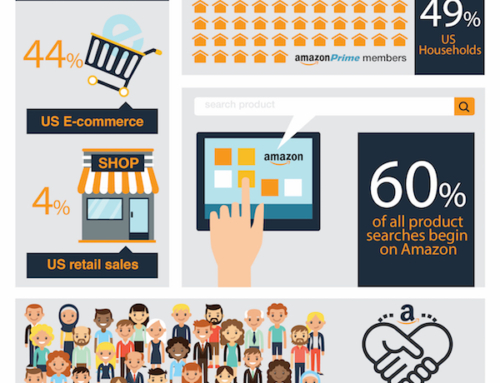What You Need To Know About Semantic SEO
To understand semantic SEO, we first need to understand semantics. Semantics is a branch of linguistics that pertains to the meaning behind the words used in a particular context.
How does this affect advanced SEO?
In the past search engines remained a naïve and gullible entity relying on keyword matching algorithms. Sometimes, the results were vague with no relevance to the query. Thanks to Google, search bots have evolved to a level where they can almost read your mind.
Nowadays, search engines are smart enough to decipher your intent and purpose behind an individual search query. In other words, search engines have started to focus on the semantics.
That is where the whole concept of semantic SEO begins.
What Is Semantic SEO?
Semantic SEO focuses on ‘Intent & Context’ of the search. Google has been working towards the creation of smarter algorithms that can understand the intent behind the search. This allows Google to return results relevant to the context.
For example, if you Google ‘backup a drive’, you would get more results about backing up a hard drive rather than backing up your car on a driveway.
The understanding of the motivation behind your query is now as clear to the computer as it is to humans. It is because of sophisticated algorithms that power the semantic search. They can filter, cross reference and rate the content to find meaningful answers.
Semantic SEO allows search engines to generate highly relevant results. Even if there isn’t an exact match of the search phrase or words used in the query.
How Does Semantic SEO work?
Traditionally, search engines used to focus on keyword searches based on metrics such as keyword frequency, traffic on the page and the number of clicks. Now there is a longer list of parameters and factors that are put to work to generate a highly relevant result.
A clearer understanding of context and intent is made by connecting all the words you have used in a query. Therefore, Google is collecting heaps of data regarding natural human speech to arm its engine with a better comprehension of context.
Every search term that you enter goes beyond simple matching of keywords. Artificial intelligence judges the content based on more user-specific metrics such as your location and search history.
Apart from these elements, many other algorithms are working in a clockwork fashion to filter content and display on the most recent and relevant one.
How can Semantic SEO Benefit Marketers?
Semantic SEO has many direct benefits for marketers. Semantic SEO provides marketers with a deeper insight into the user. We are now seeing a clearer picture into the problem they are trying to solve. We can then create content that targets the users more directly, leading to a higher chance of click and conversion.
The old tactics such as keyword spamming are not going to cut it anymore. Google’s Panda algorithms can quickly identify poor content and restricts low-quality content from displaying in the top search results.
Penguin is another algorithm that identifies sites that are spamming their search results to boost their Google rankings. Once Google identifies these sites, they are barred from appearing on the first SERP.
No one wants a Google ban.
The most modern addition to Google’s searching algorithms has been Hummingbird. This program sorts through information and delivers the best results at lightning fast speeds. This has been one of the major overhauls Google has undertaken and would shape the future of SEO and content generation.
Digital marketers should always be aware of all the elements inspected by Google and adhere to the best practices.
New content generation would require the use of powerful Meta tags and clear descriptions to support the search engine efficiency. But compelling content is what will help you better reach the customers.
How to Take Advantage of the Semantic Search?
There are many ways a marketer can exploit the whole concept of semantic search by optimizing their content.
Here are some ways to incorporate semantic SEO into your marketing model.
Creation of a Context:
Your content should have a context. Think of the best way to present the information to fulfill needs of your users. The audience likes content that has a particularly interesting context.
Co-Occurrence:
This is the identification of all the ‘companion’ words and their inclusion in the text. Through the use of co-occurring words, you can give clues and an idea on the subject of your content to the search engines. It increases your content’s reach and enables the creation of search engine results pages (SERPs).
Social Sharing:
Social sharing improves the way your content gets displayed as you get an opportunity to mark up your content with Metadata. Sharing of content on social media sites exponentially increases the credibility and the reach of your content.
Synonyms & Variations:
Identification of other sets of terms that are relevant to the topic are used to build a richer context for the search engines.
Semantic Keyword Research:
We are well aware of the importance of the search words. Ongoing research into these words could benefit your content. With semantic search, you should find profitable keywords that are relevant to your business and embed them well in your content.
Linking:
If you link your content to its sources and to similar topics, you will strengthen the relationship between documents while providing an increasing amount of value to the customers. Linking also increases the credibility of your content and upgrades your ratings.
As marketers, we are always looking for insight into the user. If you take a step back and Think about what semantic search is telling us about the user, it gives us a pathway to better engage them.
Now that we have looked at the uses of semantic search let’s look at how you can create content that engages with the user and gives you a competitive advantage in the industry.
How to Create Semantic Search Compliant Content?
Creating content that readers find interesting is the challenge for marketers. The content should also comply with modern SEO standards and fulfill the purpose of the business at the same time.
Three core values of creating relevant content are:
Quality Focused
With smarter algorithms employed by search engines, subpar content is identified and scraped. Content writers should write more for the reader and not for the search engine. Emphasize on the correct use of grammar, spelling and avoid repeating your keywords to limit spamming. Try linking the sources to the information used to increase the credibility of your content. Of course, never upload your content without proofreading/editing.
Try to deliver quality content on a regular basis to increase the number of visitors to your website. Ensure that all the information is scan-able and concise. Also, never use article spinners and link generating bot software. Using these tools will get you penalized by every search engine out there.
Expert Content
Google has been using Artificial Intelligence (AI) software to provide answers to users’ queries. It is the marketer’s responsibility to deliver the best response to those queries. The content created should have a conversational tone suitable to your business segment that answers the question simply clearly.
Knowing how your audience interacts, who they follow and the kind of questions they are asking, enables you to create content that meets their expectations and serves a need. Focus your content on your core competency.
Natural Tone
One of the cornerstones of good content is writing in your natural tone, focusing on your followers. Therefore, a conversational tone is most effective. Try using a style that sounds natural and human and explains in a tone they can understand. You should create content that answers questions or generates interest. Ultimately, you want it shared on social media and other sites.
The importance of keywords remains, but you shouldn’t overuse your keywords. Rather, rely on an organic appeal to expand your marketing horizons.
Your content should always be reader-centric, consistent and of high quality. Produce quality instead of pumping out useless piles of junk. Using structured data markups is another technique that modern search engine optimizers are using to boost their SEO. Focus your efforts on a unique angle to share your information. Unique content gives you a better chance of getting on the first page of a search.
What Is The Future Of Semantic SEO?
There is no going back now that we have experienced the advantages of semantic SEO. The minds behind the search engines such as Google and Bing are improving their technology daily. They are incorporating a personal assistant AI into the search engines.
As business owners, it is imperative that all the modern trends are incorporated in the business model to maintain a competitive edge and to reach the maximum amount of prospects regardless of where they may be.
The use of semantic SEO has already become a differentiating factor between web pages that are on the first search results page and those that are on the fifth. In the future, this would only increase given the ease it offers the consumers and businesses.
How exactly AI technology will evolve is a difficult question to answer at this time. The latest research focuses on a brain-computer interface and augmented reality.
Over the next decade, we might have computers that you can have a proper conversation with and ask questions in real time. Or a robot driven future as depicted in sci-fi movies, where we ask any question to an artificially made non-sentient being and get an accurate answer.
We can only guess at the course the future will take. However, technology is growing exponentially. Businesses that are not proactively incorporating the latest innovations in their models would soon find themselves lagging far behind the competition.












Leave A Comment